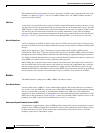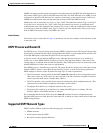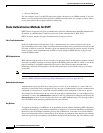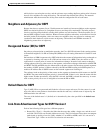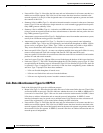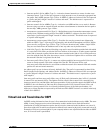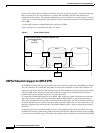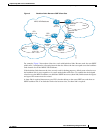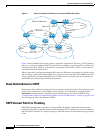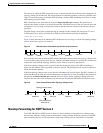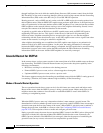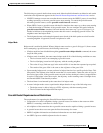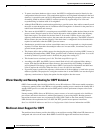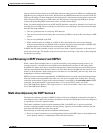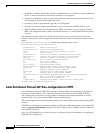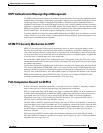
Implementing OSPF on Cisco IOS XR Software
Information About Implementing OSPF on Cisco IOS XR Software
RC-186
Cisco IOS XR Routing Configuration Guide
OL-14356-01
Figure 4 Sham Link Between PE Routers to Connected OSPF Client Sites
Figure 4 shows an MPLS VPN topology where a sham link configuration is necessary. A VPN client has
three sites, each with a backdoor link. Two sham links are configured, one between PE-1 and PE-2 and
another between PE-2 and PE-3. A sham link is not required between PE-1 and PE-3, because there is
no backdoor link between these sites.
When a sham link is configured between the PE routers, the PE routers can populate the virtual routing
and forwarding (VRF) table with the OSPF routes learned over the sham link. These OSPF routes have
a larger administrative distance than BGP routes. If BGP routes are available, they are preferred over
these OSPF routes with the high administrative distance.
Route Redistribution for OSPF
Redistribution allows different routing protocols to exchange routing information. This technique can be
used to allow connectivity to span multiple routing protocols. It is important to remember that the
redistribute command controls redistribution into an OSPF process and not from OSPF. See the
“Configuration Examples for Implementing OSPF on Cisco IOS XR Software” section on page RC-255
for an example of route redistribution for OSPF.
OSPF Shortest Path First Throttling
OSPF SPF throttling makes it possible to configure SPF scheduling in millisecond intervals and to
potentially delay SPF calculations during network instability. SPF is scheduled to calculate the Shortest
Path Tree (SPT) when there is a change in topology. One SPF run may include multiple topology change
events.
MPLS VPN Backbone
Area 1
Winchester
10.3.1.7
Brighton
242095
PE3
10.3.1.2
PE2
10.3.1.5
backdoor
link
backdoor
link
backdoor link
PE1
10.3.1.6
Area 1
Stockholm
10.3.1.3
Area 1
Vienna
10.3.1.38
Sham-link
Sham-link



